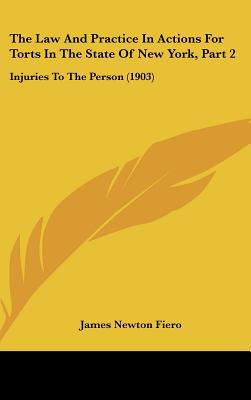

 |

|

The average rating for The Law And Practice In Actions For Torts In The State Of New York, Part 2: Injuries To The ... based on 2 reviews is 4.5 stars.
Review # 1 was written on 2020-08-02 00:00:00 Ruth Locke Ruth LockeRecently I started re-reading Robert Byron’s The Road to Oxiana with my book group in San Francisco (now a continent and a Zoom meeting away) and as usual found that I’d forgotten most of it. Piqued by the preface by Rory Stewart and the introduction by Paul Fussell, I wanted to know much more about Byron. Luckily I was able to locate a copy of James Knox’s biography (handsomely published by John Murray). Byron’s life was richer than I’d imagined; his achievements fairly spectacular. In Abroad: British Literary Traveling Between the Wars Paul Fussell describes The Road to Oxiana as his masterpiece: Its distinction tempts one to overpraise but perhaps it may not be going too far to say that what Ulysses is to the novel between the wars and what The Waste Land is to poetry, The Road to Oxiana is to the travel book. It is virtually unknown in the United States, a fact I take to imply serious cultural impoverishment. Amazing as this may be, already in his early 20s Byron had successfully refocused critical attention on the art and culture of Byzantium, just as he did for early Islamic art in Oxiana. In reading Knox’s biography, I was particularly curious to learn what happened to Bryon after he’d published Oxiana, and how quickly his observations and intelligence had alerted him to the danger of fascism. He was a close and caustic observer of Hitler’s rise. For example, one of his aristocratic friends, Unity Mitford, got him front row seats at the Parteitag in Nuremberg in September 1938. It’s worth typing out an extract that captures both the comedy and horror of that moment. Over the next week, Robert was assiduous in his attendance at the rallies, parades and formal sessions of the Congress. Allocated a prime seat, he had an unrivalled view of the choreography of each event. At one session of the Congress, Robert was embarrassed to find himself seated alongside Unity in the front row. The problem of hailing Hitler now arose. Foreigners were not expected to make the Nazi salute, but not having a hat to doff, Robert was in danger of drawing attention to himself. Thus he decided to fall in line, and stick out his arm. Suddenly, Hitler, walking at a great pace, swept around the corner: “my fingers,” Robert reported, “were nearly bitten off by the Führer and I half withdrew my arm, thus assuming a position of grotesque flabbiness.” Byron quickly established himself as an articulate enemy of appeasement, antagonizing members of the ruling class whenever one of his powerful friends invited him to some state occasion, raging against Chamberlin and his cabinet as Hitler absorbed Czechoslavakia and Austria. Knox provides a few fine stories. Eventually no one would invite him to anything. When Hitler invaded Poland on September 1, 1939, Robert delivered his verdict on the conduct of Britain’s foreign policy over the past few years: “Appeasement,” he remarked, “seems to have had its final success.” I paused before reading the final chapter, knowing how it would end. After strenuous efforts to contribute to the war against Germany, Robert set sail for Cairo, where he would work for British intelligence. His ship was sunk in the north Atlantic in February 1941. Details of his death were slow to arrive back in England, and such was the force of his personality that neither friends nor family could quite believe him dead. Knox provided what I’d hoped to find – a wealth of detail about a fascinating, flawed and brilliant writer, ambitious, dramatically unlucky in love, an excellent and exasperating friend, killed two days before his 36th birthday. Robert Byron is a British original worth discovering. |
Review # 2 was written on 2012-12-18 00:00:00 Frank Counce Frank CounceWhat an excellent biography! Knox ably captures the personality of Robert Byron, the acclaimed travel writer and expert on Byzantine and Persian art and architecture. Byron was a prickly individual so he was probably not a person who would be an easy companion. Byron was one of the early champions of Georgian period architecture in the period before World War II when it was considered old fashioned and not worth saving. The fact that Carleton House Terrace is still standing is due in part to him and like-minded conservationists. Byron was the victim of unrequited love so there is a melancholy aspect to his life. If he had survived the war I wonder if he would have achieved some contentment? I must now re-read The Road to Oxiana ! |
CAN'T FIND WHAT YOU'RE LOOKING FOR? CLICK HERE!!!